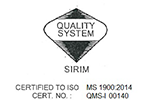Reviving The Malaysian Spirit
The primary objectives in the Shared Prosperity Vision 2030 (SPV2030) include addressing wealth and income disparities across all income groups, ethnicities, regions and supply chains. The commitment aims towards achieving sustainable growth whilst celebrating ethnic and cultural diversity.
However, one of the concerns highlighted to build an enlightened society by 2030 is the ability to understand the concept of national identity and nation state, which can cause conflict due to ethnicity and religious issues.
Six decades after Independence, have we progressed positively in strengthening our national unity? We may think that the question about unity is a trivial matter and the least important when it comes to formulating an economic agenda. This is when we get it wrong.
Racial unity and religious harmony are the building blocks for an economic stability, peace and prosperity in any plural society. As a nation, the Federation of Malaya Agreement 1948 serves as the earliest blueprint for our unity and later the Malaysia Agreement 1963.
Ethnic politics had prevailed in the 1960s. Economically, most Malays survived in the traditional rural sector. Back then, the ratio of non-Malays to Malays in the modern sector was about five-to-two. The growing tension of ethnic politics and economic disparity burst into the 13 May 1969 riot—an unforgettable tragedy in the history of our national unity. Without the firm and prompt action to control the situation, the racial riot might have turned into a holocaust.
The 13 May Incident marked a new chapter in our history with the introduction of the Rukun Negara in 1970 and the New Economic Policy in 1971. In 1970, almost 50 per cent of the population were still poor, with 74 per cent of them were Malays. The mean household income of Malays was only RM172 per month, in comparison to RM304 for Indians and RM394 for the Chinese. Apart from low business participation, the Malays collectively owned only 1.6 per cent of shares for financial assets, while 34.3 per cent was held by non-Malays and 66.3 per cent by foreigners.
Fast-forward to the present and we can see the results of the continuous 5-year economic policies up to the 11th Malaysian Plan in 2020. The poverty rate has been reduced from 50 per cent to less than 1 per cent in 2014. But the Bumiputeras still made up the highest incidence of absolute poverty at 7.2 per cent in 2019.
Overall, household income inequality has improved—with Gini coefficient narrowed from 0.513 in 1970 to 0.407 in 2019. Yet, the median household income for Bumiputeras was the lowest at RM5,420 per month in 2019 vis-à-vis RM7,391 for Chinese and RM5,981 for Indians. Furthermore, the Bumiputera-owned corporate equity represents only 16.2 per cent, while the non-Bumiputeras held 30.7 per cent and foreigners retained 45.3 per cent equity in 2015.
Moving forward, the 12th Malaysian Plan which encompasses the first half of the SPV2030, brings the spirit of Keluarga Malaysia (Malaysian Family) in restructuring the economy for ‘A Prosperous, Inclusive, Sustainable Malaysia.’ To reduce income disparity among groups, the Gini coefficient value is targeted at 0.34 in 2030. Other targets include a monthly median household income ratio of Bumiputera, Chinese and Indian ethnic groups at 0.9:1:1 and the ratio of financial assets per capita of Bumiputera to Chinese at 0.6:1, while Indian to Chinese at 0.8:1.
The ongoing Malaysian Plan which aims to reduce the economic gap among ethnic groups has yet to materialise its target figures. Nonetheless, the affirmative action in managing the ethnic tension post-1969 by providing special assistance to the Bumiputeras within the context of poor or economically disadvantaged and without entirely ignoring the interests of the non-Bumiputeras deserves a merit.
At the global level, Malaysia is categorised as a highly peaceful country and ranked at the 23rd place out of 163 independent states (which covers 99.7 per cent of the world’s population) in the Global Peace Index (GPI) 2021. An important note from the GPI data is low levels of corruption is the only pillar that is strongly associated with peacefulness and low level of violence. Based on Malaysia’s performance in the Corruption Perception Index, a clean image country is highly desirable in order to gain peacefulness and ultimately achieve a superior economic outperformance.
Over the years, issues on race and religious sensitivities may create disunity and weaken democracy if left unchecked. For example, the denial of ‘social contract’ based on the argument that the words were not explicitly mentioned in the constitution. Other issues include the implication of Islamic practices to non-Muslims as well as perceived discrimination against religions other than Islam. On the move towards establishment of Islamic state with hudud laws, there were also disagreements among political parties with opposing worldviews.
The SPV2030 have proposed some recommendations such as formulating national media-related policies and strengthening educational materials for the purpose of civic learning, promoting unity and shaping social maturity. The National Unity Policy and National Unity Blueprint 2021–2030 have also been launched early this year as to empower national unity in our country.
In the end, what matters most lies in living the Malaysian spirit beyond merely political ideologies and written policies. Remember, we were once united as a Malaysian Family to gain Independence and it is time to revive the spirit in our SPV2030 journey towards becoming a dignified and prosperous nation.




